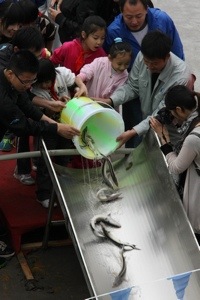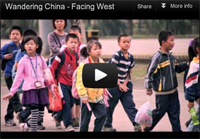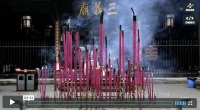Is China’s return to superpower status predicated on the same conditions as America? America ascended as a new-found identity with recent memory of empire. This is, according to some historians, China’s fourth rise as a world power. In a sense, it has four times as much experience in its collective memory.
Foreign Policy has Peter Calthorpe, architect and thinker on sustainable building paint broad dystopian brushstrokes. Perhaps as a fundamental starting point, Calthorpe leaves out the difference in scale in comparing the two – Self-inflicted, or regulated depending on how you see it, or otherwise, China has four times more mouths to feed, and the article sees little emphasis on what it is getting right with its green efforts (Nat Geo, 2011: Can China go Green?). Anyone who has been to Hangzhou for example, will see where they have got it right. The challenge is to replicate that model consistently.
China has just about the 80th densest population in the world.
At around 140/km2 it also has 4 times the number of individuals than the United States, with both about the same in terms of land area.
The US is 178th with about 34/km2.
Singapore where I was born has the 2nd largest population density for an independent country with about 8,000/km2 – it’s a sardine can compared to those numbers.
Maybe this provides a clue into Chinese long-term thinking – what are the empty forts/cities (Daily Mail, 2011) around China are for? Classic 36 strategem misdirection. Fair assessment perhaps if China is a developed country. It isn’t. Half developed at best at the moment , based on just a urbanisation benchmark. Perhaps China’s push to develop inland to re-route its socio-economic arteries hasn’t caught his attention yet. This frame of thinking in the piece assumes that China is simply going to build more rings around its existing cities.
If anything, due to China’s high population density, the Chinese urban reckoning will be even more severe than America’s. Already, traffic in Beijing is frequently at a standstill despite the incredible pace of road construction (a “solution” akin to trying to lose weight by loosening your belt). The situation is so dire that Beijing, Guangzhou, and Shanghai are using a lottery to allocate a limited number of vehicle registrations. In August 2010, a 60-mile traffic jam stopped a highway outside Beijing for 11 days. There’s a reason no high-density city has ever been designed around the car: It simply doesn’t work. Peter Calthorpe
China in my mind, simply isn’t done rechanneling, yet. Looking at the speed policy translates to fiscal, infrastructural manifestations in China, China’s weakness is weak policy with insufficient foresight bearing in mind the global condition and neighbourly concerns.
– – –
Weapons of Mass Urban Destruction China’s cities are making the same mistake America made on the path to superpower status. By Peter Calthorpe | SEPT/OCT 2012 Source – Foreign Policy, published August 13, 2012

Image Source – Foreign Policy, 2012
In the last five years, China has built 20,000 miles of expressways, finishing the construction of 12 national highways a whopping 13 years ahead of schedule and at a pace four times faster than the United States built its interstate highway system. Over the last decade, Shanghai alone has built some 1,500 miles of road, the equivalent of three Manhattans. China’s urban population is projected to grow by 350 million people by 2020, effectively adding today’s entire U.S. population to its cities in less than a decade. China has already passed the United States as the world’s largest car market, and by 2025, the country will need to pave up to an estimated 5 billion square meters of road just to keep moving.
China’s love affair with the car has blossomed into a torrid romance. In April, nearly a million people poured into the Beijing International Automotive Exhibition to coo over the latest Audis, BMWs, and Toyotas. But China is in danger of making the same mistakes the United States made on its way to superpower status — mistakes that have left Americans reliant on foreign oil from unstable parts of the world, staggering under the cost of unhealthy patterns of living, and struggling to overcome the urban legacy of decades of inner-city decay.
The choices China makes in the years ahead will have an immense impact not only on the long-term viability, livability, and energy efficiency of its cities, but also on the health of the entire planet. Unfortunately, much of what China is building is based on outdated Western planning ideas that put its cars at the center of urban life, rather than its people. And the bill will be paid in the form of larger waistlines, reduced quality of life, and choking pollution and congestion. The Chinese may get fat and unhappy before they get rich. Read the rest of this entry »
Filed under: Beijing Consensus, Charm Offensive, Chinese Model, Communications, Culture, Domestic Growth, Economics, Education, Environment, Foreign Policy Magazine, Government & Policy, Influence, Infrastructure, Media, Peaceful Development, Politics, Pollution, Population, Property, Reform, Social, Strategy, Tao Guang Yang Hui (韬光养晦), The Chinese Identity, The construction of Chinese and Non-Chinese identities, U.S., China's Rise, culture, Economics, Education, Environment, Natural Resources, Politics, Public Diplomacy, Strategy, U.S.
















The Sharing Circle